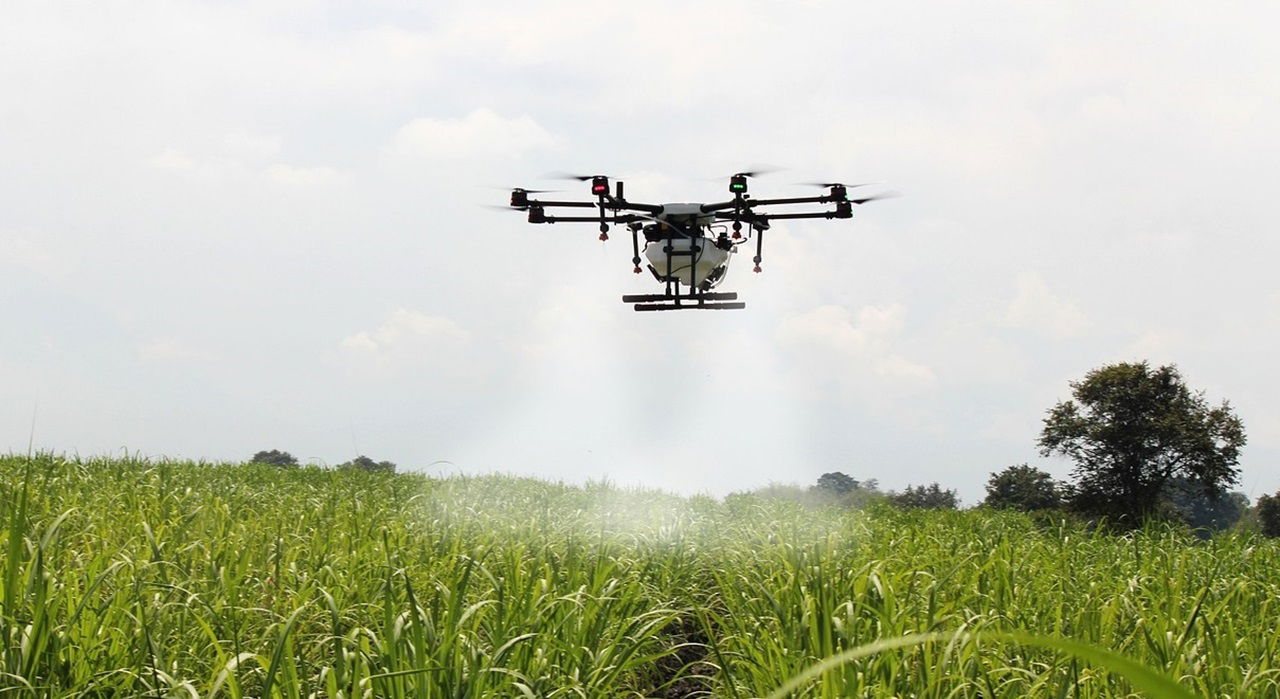
The government has approved the Central Sector Scheme “Namo Drone Didi,” a program designed to empower Women Self-Help Groups (SHGs) under the Deendayal Antyodaya Yojana - National Rural Livelihoods Mission (DAY-NRLM). With an allocated budget of Rs 1,261 crores, the scheme aims to provide 14,500 drones to selected women SHGs between 2024-25 and 2025-26. These drones will be used for rental services to farmers, particularly for agricultural applications such as spraying liquid fertilizers and pesticides. The government has also issued Operational Guidelines to ensure the swift rollout and implementation of the ‘Namo Drone Didi’ Scheme.
The Department of Agriculture & Farmers’ Welfare has urged all stakeholders to leverage these operational guidelines for the swift and effective rollout of the “Namo Drone Didi” scheme. This initiative will be centrally managed by an Empowered Committee of Secretaries across multiple ministries, including Agriculture, Rural Development, Fertilizers, Civil Aviation, and Women and Child Development.
The financial model of the scheme includes an 80% Central Financial Assistance (CFA) subsidy, covering drone procurement costs up to a maximum of Rs 8 lakhs per drone package. This CFA will be provided to SHGs to make drones financially accessible. SHGs may raise the remaining funds for drone procurement through the Agriculture Infra Financing Facility (AIF), which offers an additional 3% interest subvention on loans, or through other financing avenues available under Ministry of Rural Development programs.
Each drone package contains the drone and tailored accessories for agriculture. The package comprises a drone with spray capabilities, a battery set, a camera, a charger hub, and a carrying box, ensuring SHGs have the tools required for efficient field operations. Additional equipment, such as spare batteries and propellers, enables continuous operation, allowing drones to cover up to 20 acres daily. The package also includes essential training, one year of on-site warranty, two years of annual maintenance, comprehensive insurance, and applicable GST, making it a robust and self-sufficient setup for SHGs.
Training is a vital component of this initiative. Each SHG will have one member trained as a drone pilot, receiving a mandatory 15-day program that includes specific skills for agricultural nutrient and pesticide applications. Another member, or a family member inclined toward electrical and mechanical skills, will be trained as a drone assistant to manage maintenance and minor repairs, ensuring a consistent workflow. Drone manufacturers will provide these training modules as part of the package, aligning with government-issued training schedules.
At the state level, Lead Fertilizer Companies (LFCs) will serve as implementing agencies. These companies will coordinate with state agricultural departments, drone manufacturers, SHGs, and farmers to ensure smooth operational integration. To enhance accessibility and simplify implementation, LFCs will procure the drones through a transparent process, transferring ownership to SHGs, either independently or through Cluster Level Federations (CLFs).
The selection of operational areas is crucial for maximizing the scheme’s impact. Targeted areas will be chosen based on demand, with SHGs expected to cover between 2,000 to 2,500 acres annually. Since drone technology in agriculture is in its initial stages, state departments and DAY-NRLM (Deendayal Antyodaya Yojana - National Rural Livelihoods Mission) officials will closely monitor and support SHGs as they adapt to these new tools. A State Level Committee will manage on-ground implementation, working in close alignment with the State Departments of Agriculture to offer guidance, logistical support, and to help SHGs secure clientele for sustainable business.
To ensure transparency and efficiency, the scheme will be monitored via an IT-based Management Information System (MIS), known as the Drone Portal. This platform will facilitate end-to-end service delivery, track fund flows, and monitor the operational use of each drone in real time. The portal is envisioned as a one-stop digital ecosystem for streamlining fund disbursement, service tracking, and data-driven decision-making.
The "Namo Drone Didi" initiative is set to make a significant socio-economic impact, not only supporting sustainable livelihoods for women but also infusing advanced technology into India’s agricultural landscape. This innovative scheme empowers SHGs, enhances crop yield, improves operational efficiency, and ultimately lowers the cost of agricultural inputs, benefiting the broader rural economy.
















